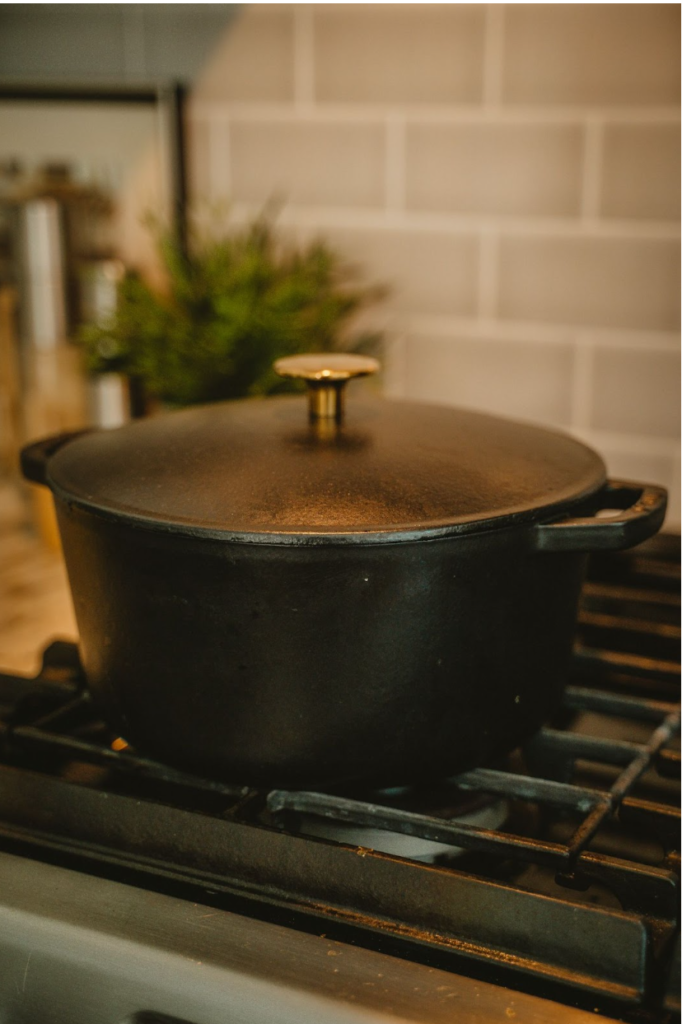Cast iron cookware has stood the test of time, cherished by generations of chefs and home cooks alike. Its ability to retain heat evenly and its versatility make it a staple in kitchens worldwide.
However, to truly enjoy the benefits of cast iron, it’s essential to understand how to care for it properly.
Read on as we explore the ins and outs of cast iron care, from seasoning to maintenance and beyond.
Understanding Your Cast Iron Cookware:
Before diving into care techniques, it’s helpful to understand the basics of cast iron cookware.
From skillets to Dutch ovens, cast iron comes in various forms, each with its unique advantages. One of the most significant benefits of cast iron is its ability to distribute heat evenly, making it ideal for searing meats and baking.
Additionally, cast iron is renowned for its durability, often lasting for generations with proper care.
Seasoning Your Cast Iron:
Seasoning is a crucial step in caring for cast iron cookware. Seasoning involves creating a protective layer on the cookware’s surface. To season your cast iron skillet or other cookware, start by applying a thin layer of oil and heating it in the oven. Repeat this process several times to build up a non-stick coating that also helps prevent rust.
Best Types of Oils
When it comes to seasoning cast iron cookware, choosing the right oil is crucial for achieving optimal results. Oils with high smoke points and neutral flavors are ideal for seasoning, as they create a durable non-stick surface without imparting any unwanted tastes to your food.
Some of the best oils for seasoning cast iron include vegetable oil, canola oil, grapeseed oil, and flaxseed oil.
These oils have smoke points well above the temperature required for seasoning (typically around 400°F to 500°F), allowing them to polymerize and form a hard, slick coating on the surface of the cookware.
Additionally, their neutral flavors won’t interfere with the taste of your dishes, ensuring that your cast iron remains versatile and adaptable to a wide range of recipes.
When seasoning your cast iron, remember to apply a thin, even layer of oil and heat it in the oven to bond it to the surface of the cookware effectively.
Cleaning and Maintenance:
Proper cleaning and maintenance are essential for preserving the integrity of your cast iron cookware. Wash your cast iron after every use with warm water and a soft cloth. Avoid using soap as it can potentially strip away the seasoning, leaving you with a cast iron piece of cookware that everything sticks to!a
Use a gentle abrasive like kosher salt or a nylon brush for stubborn residue. Once clean, thoroughly dry your cast iron to prevent rust, and store it in a dry place.
Cooking with Cast Iron:
Cooking with cast iron is a delight once you understand a few key techniques. To prevent sticking, preheat your skillet before adding ingredients, and use the right oils with high smoke points, such as vegetable or grapeseed oil.
While cast iron is incredibly versatile, it’s best to avoid acidic foods that can damage the seasoning. Instead, embrace the joy of searing, frying, and baking in your trusty cast iron cookware.
Troubleshooting and Restoration:
Over time, you may encounter signs of wear or rust on your cast iron cookware. Don’t panic! You can restore your beloved pieces to their former glory with proper care.
If rust appears, scrub it away with steel wool or a vinegar solution, then re-season as needed. Professional restoration services are available for more severe damage, ensuring your cast iron lasts for generations to come.
Caring for cast iron cookware is both a science and an art, but the rewards are well worth the effort. With proper seasoning, cleaning, and cooking techniques, your cast iron will become a cherished companion in the kitchen, capable of producing mouthwatering meals for years to come. So, roll up your sleeves, grab your favorite skillet, and let the culinary adventures begin!
10 Ways to Organize Kitchen Utensils



